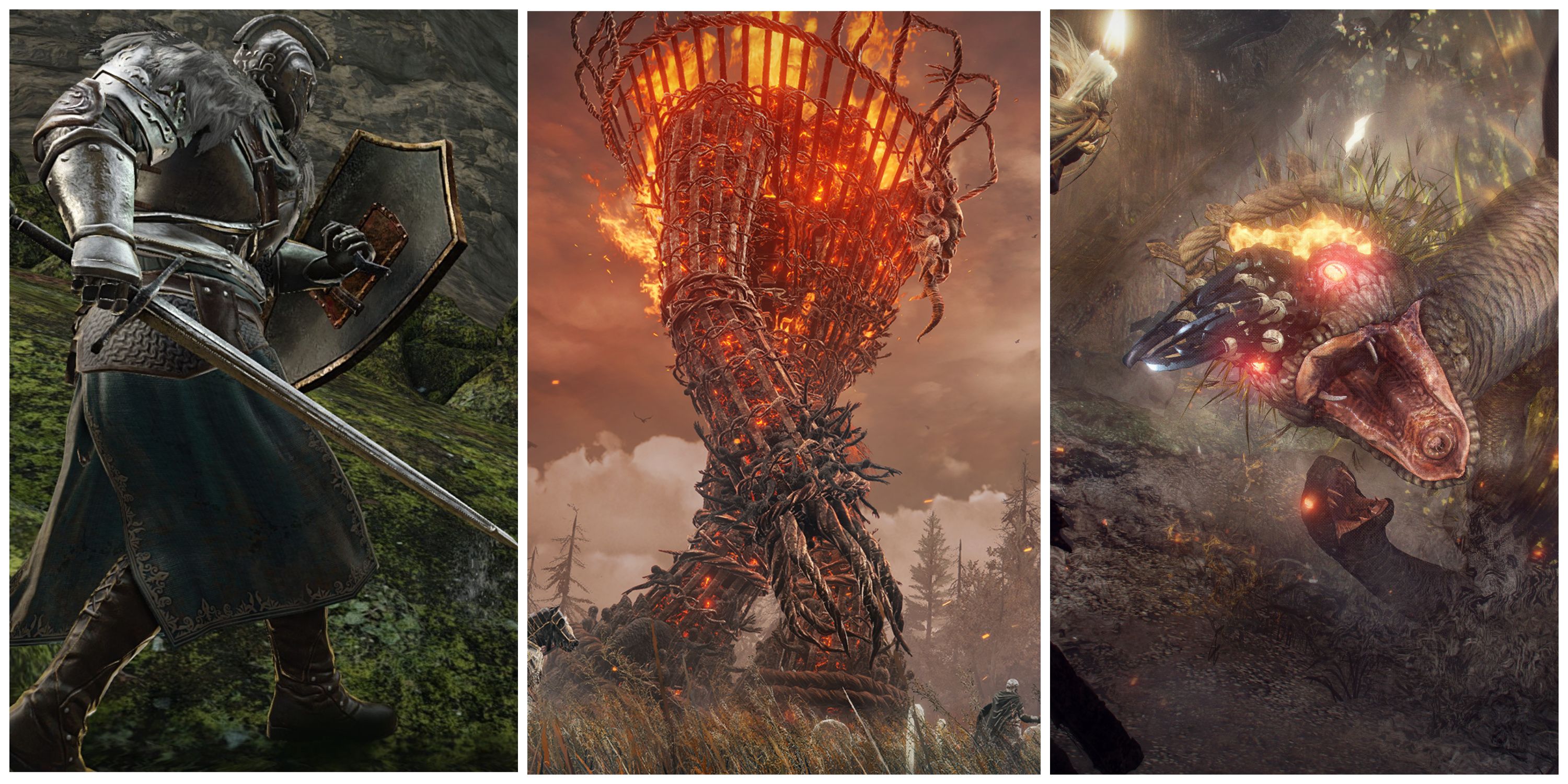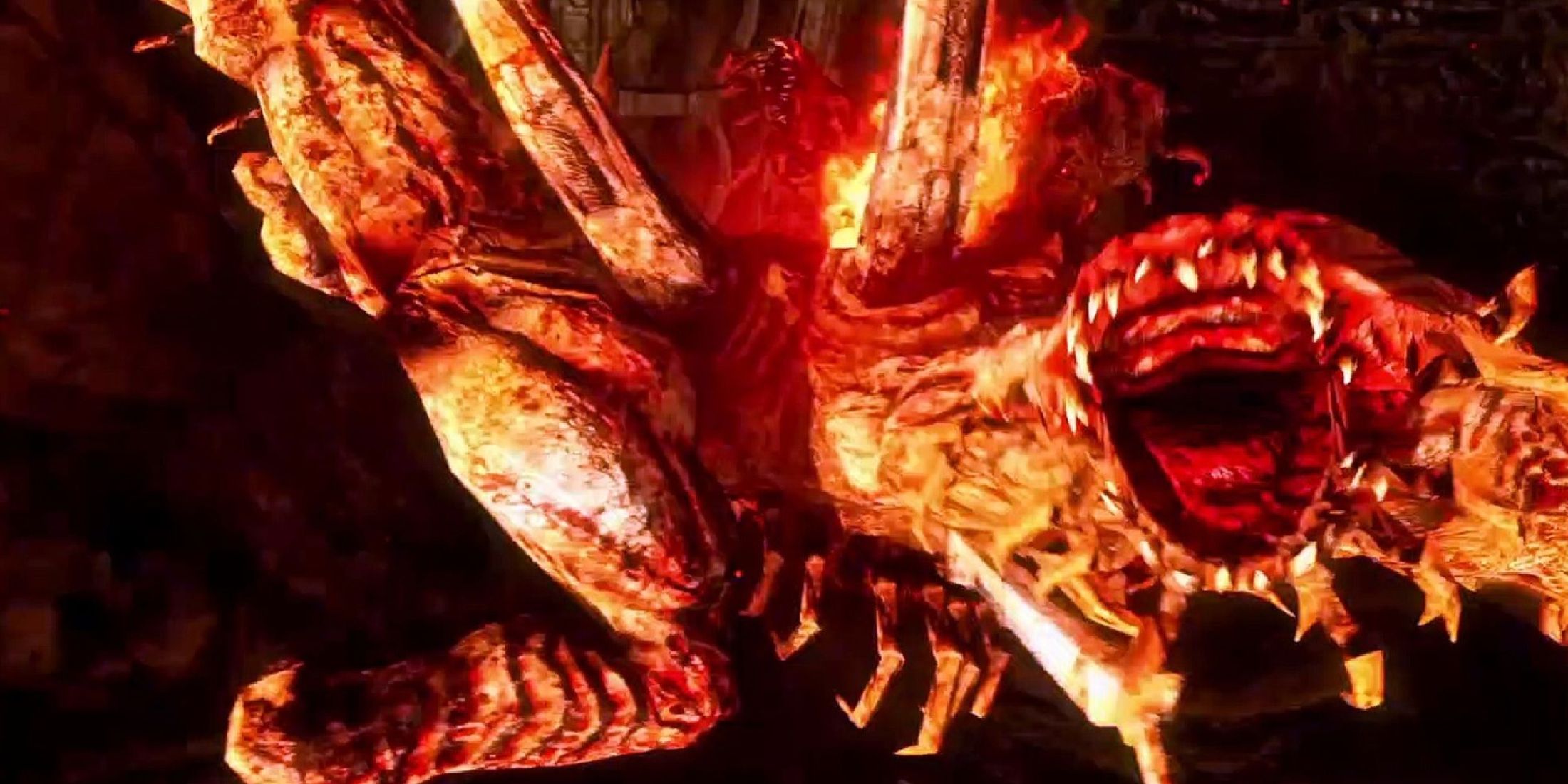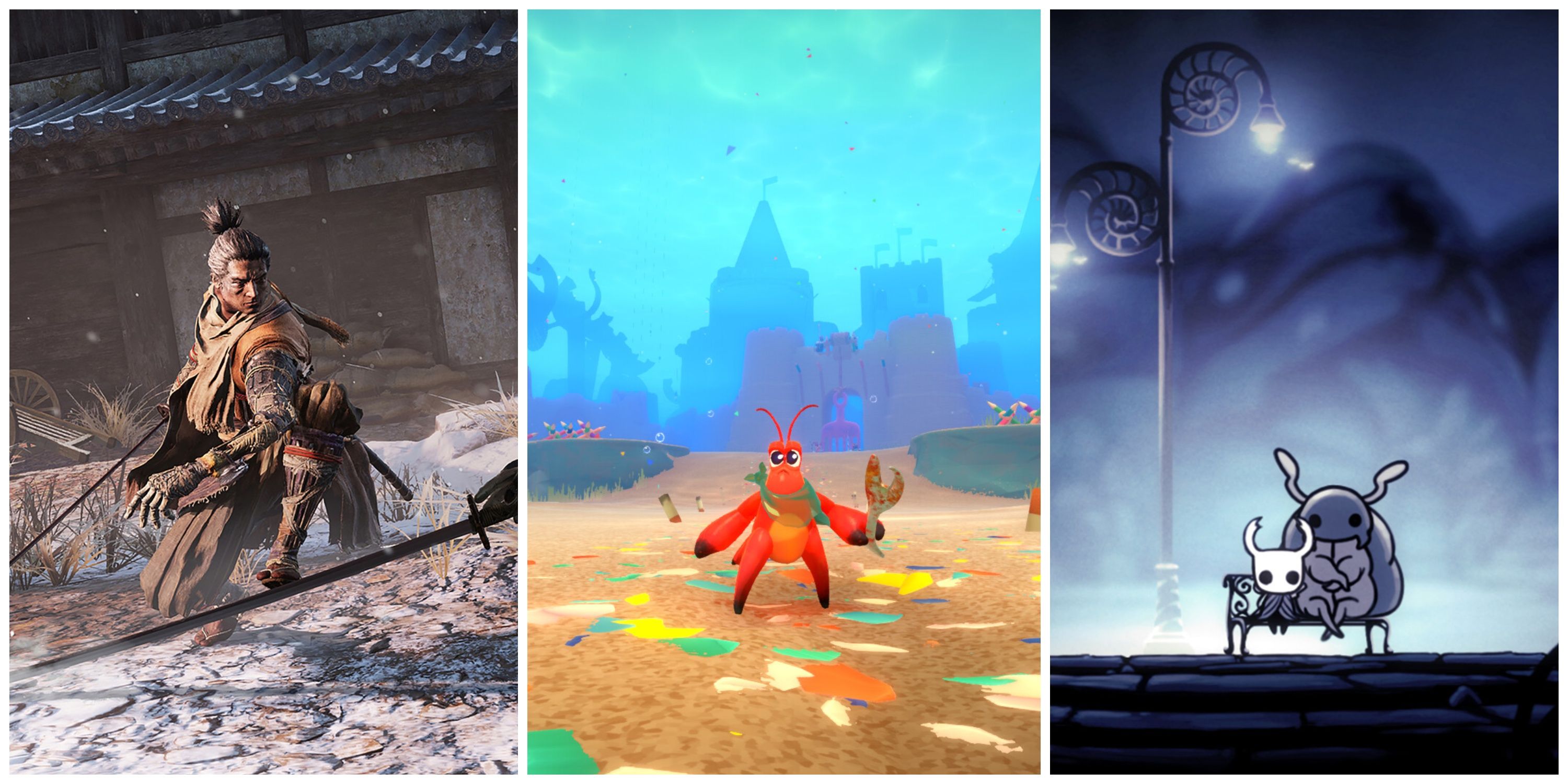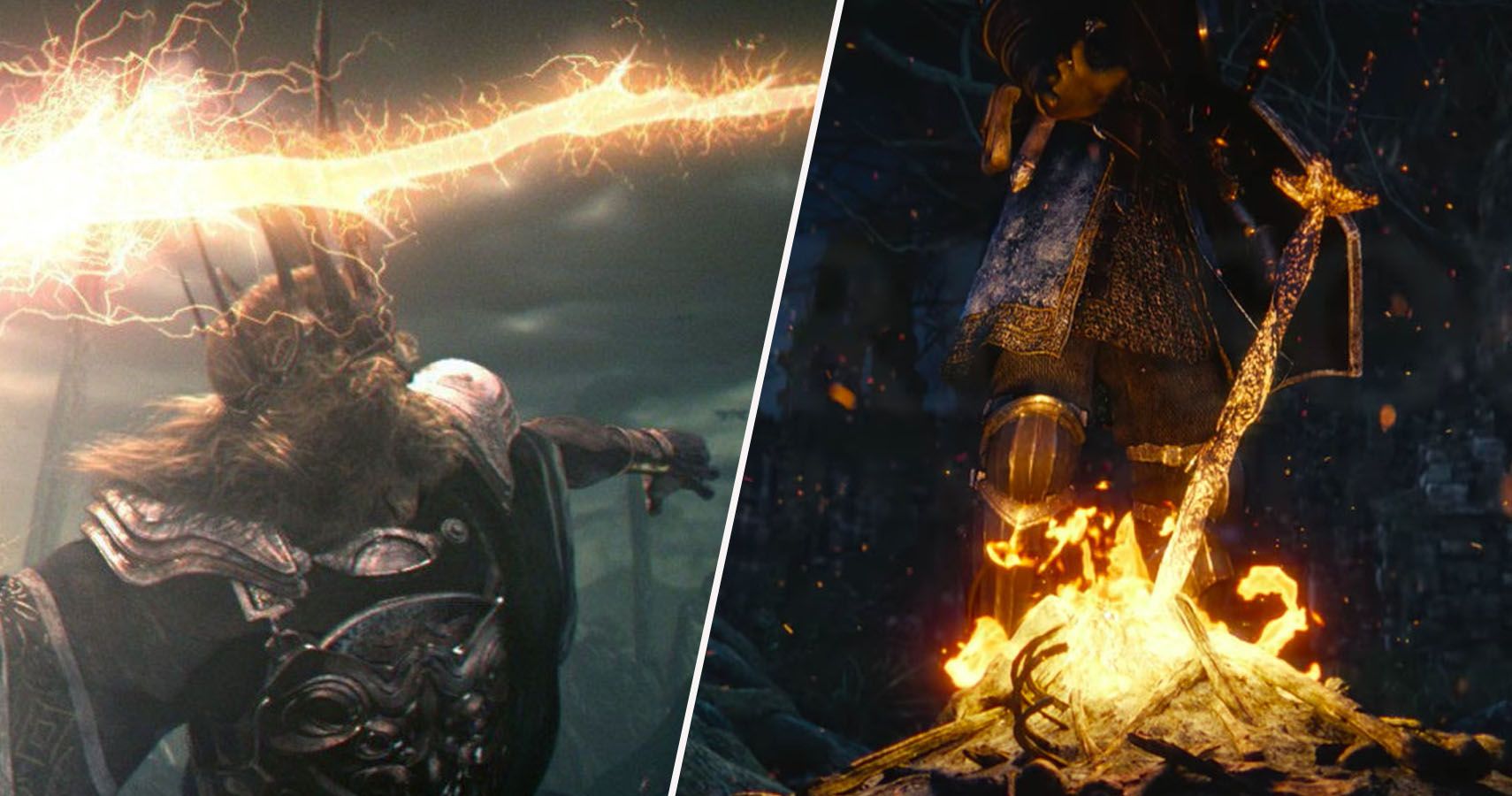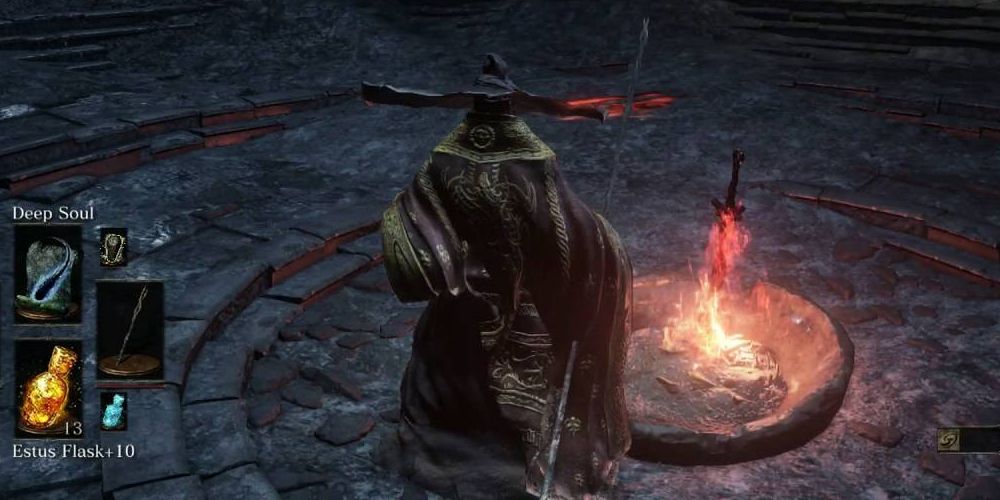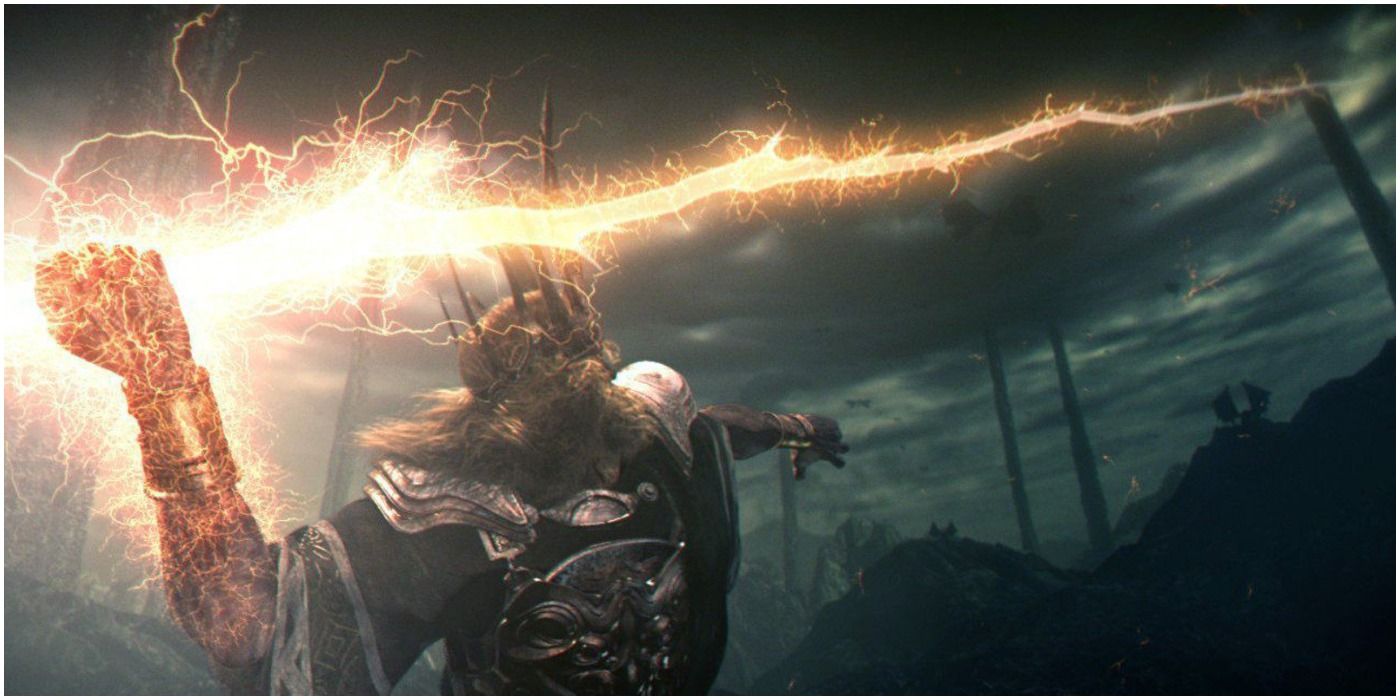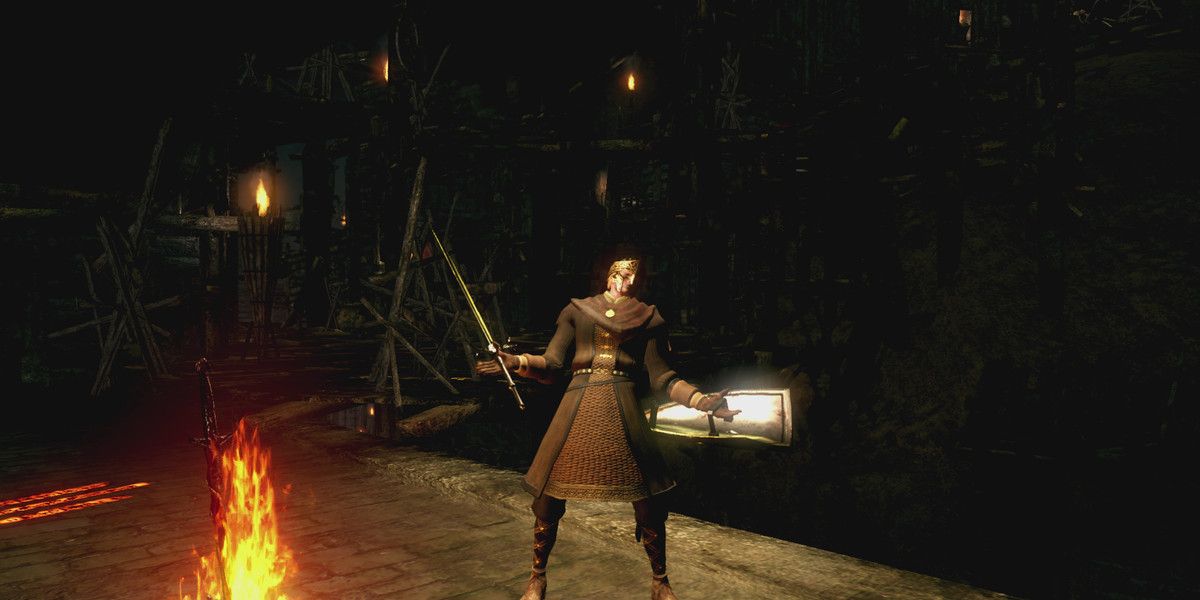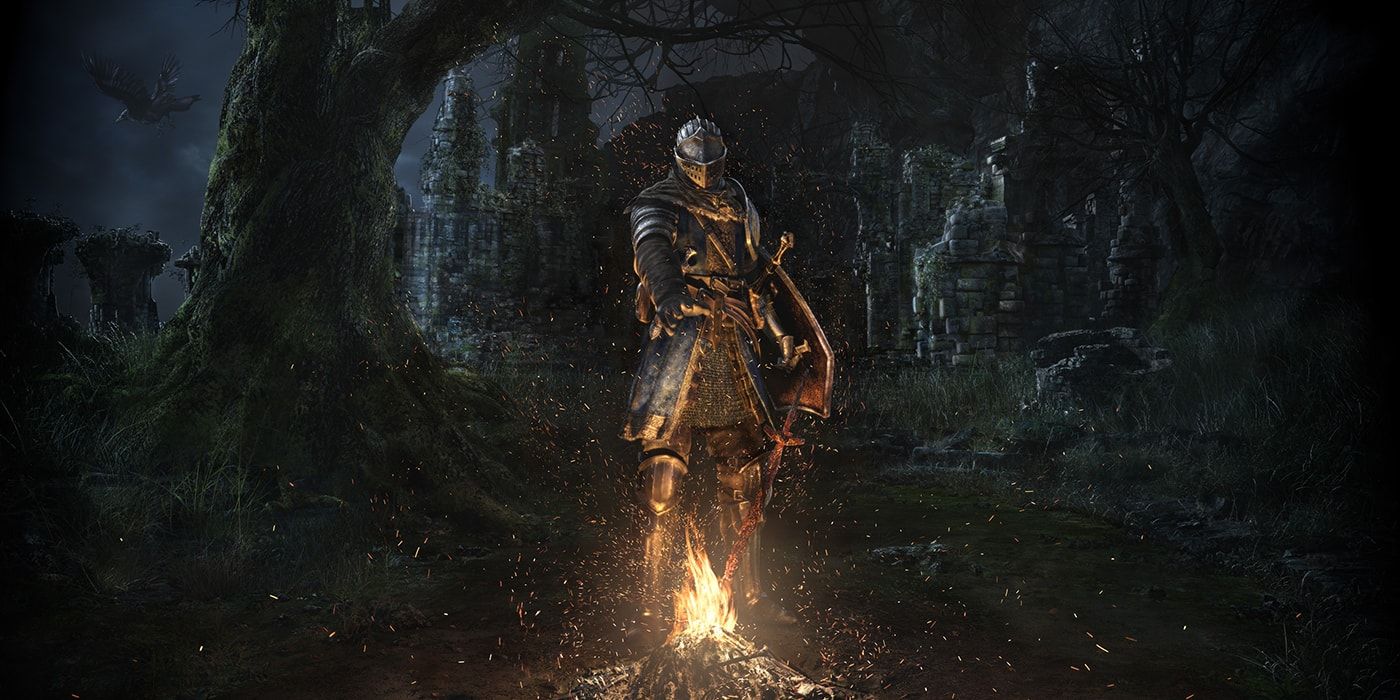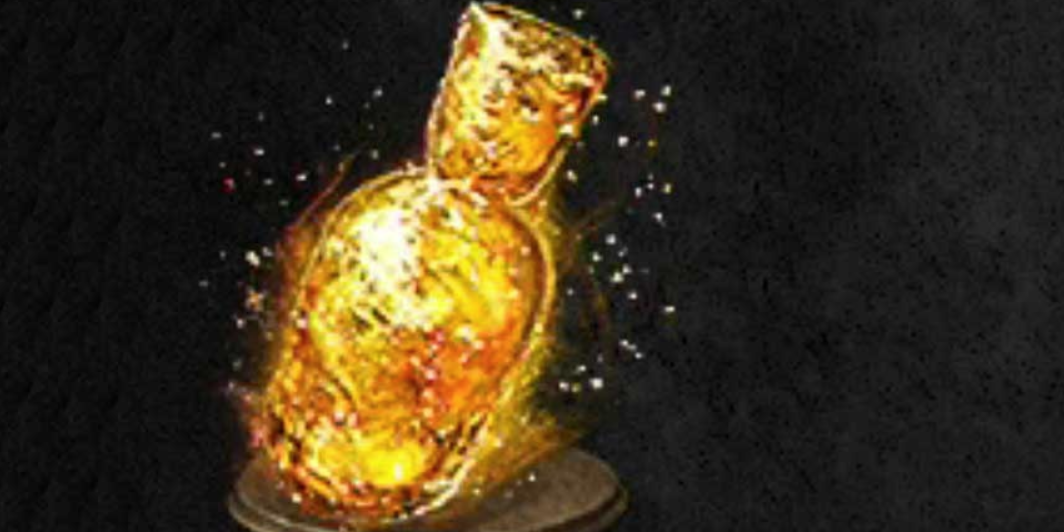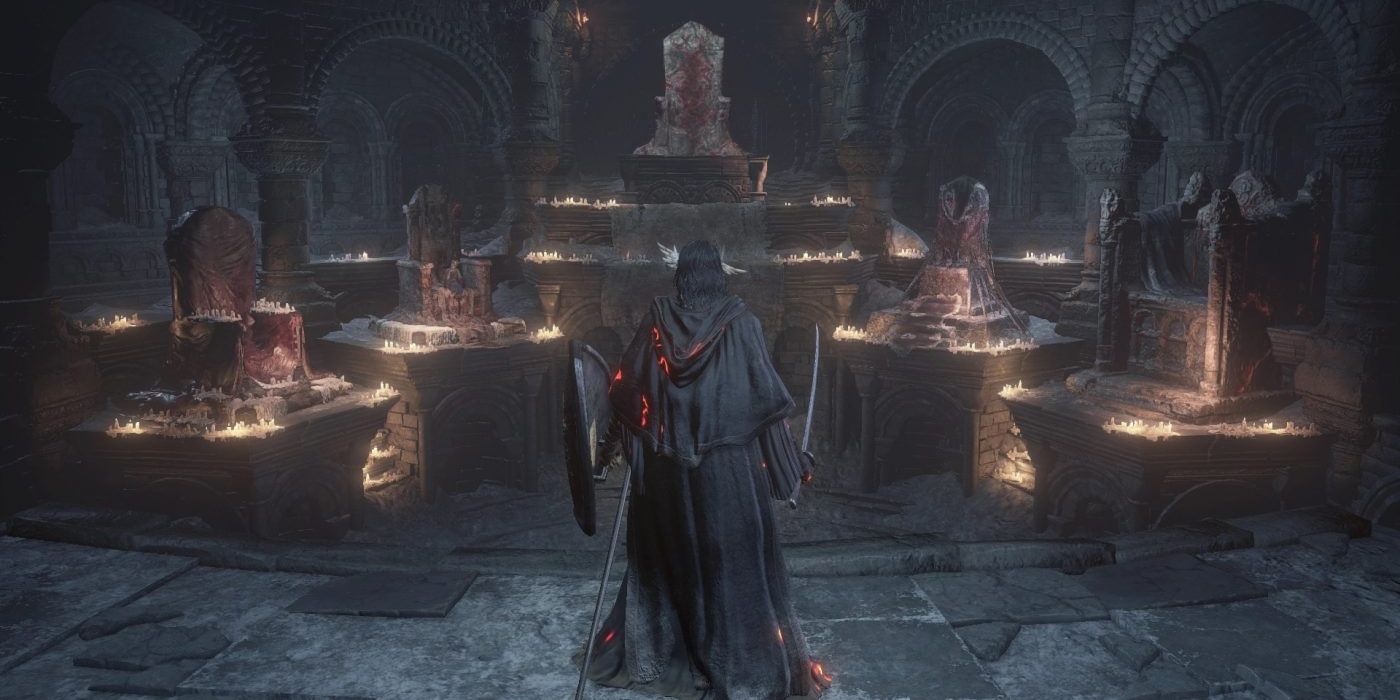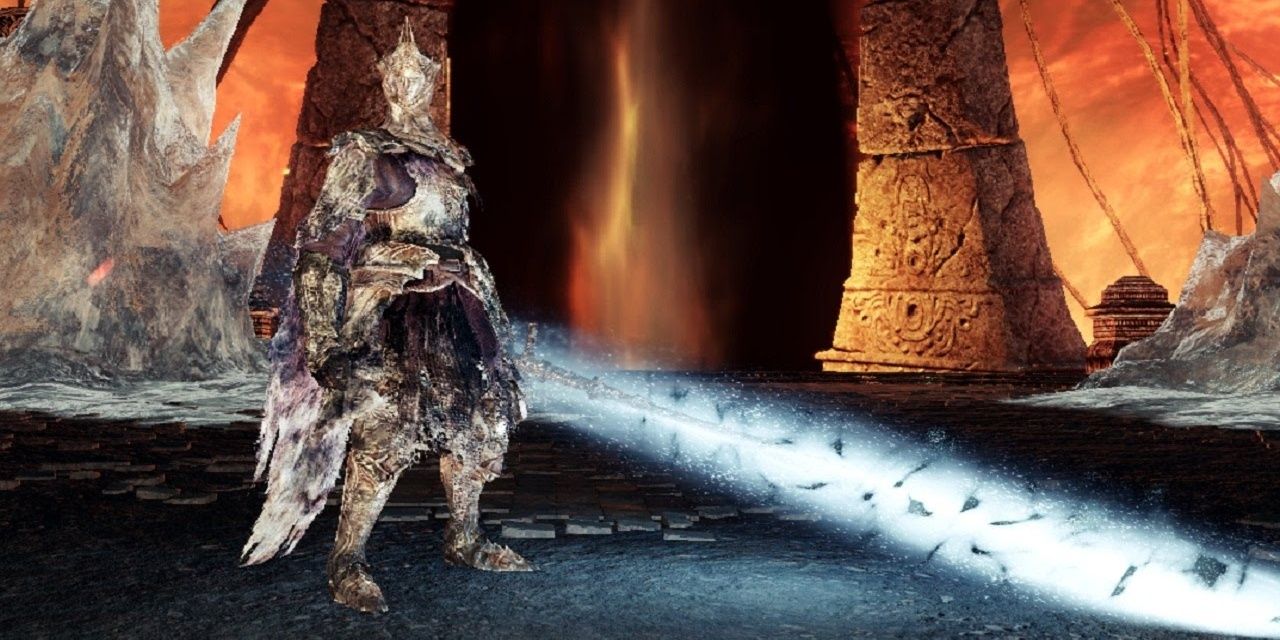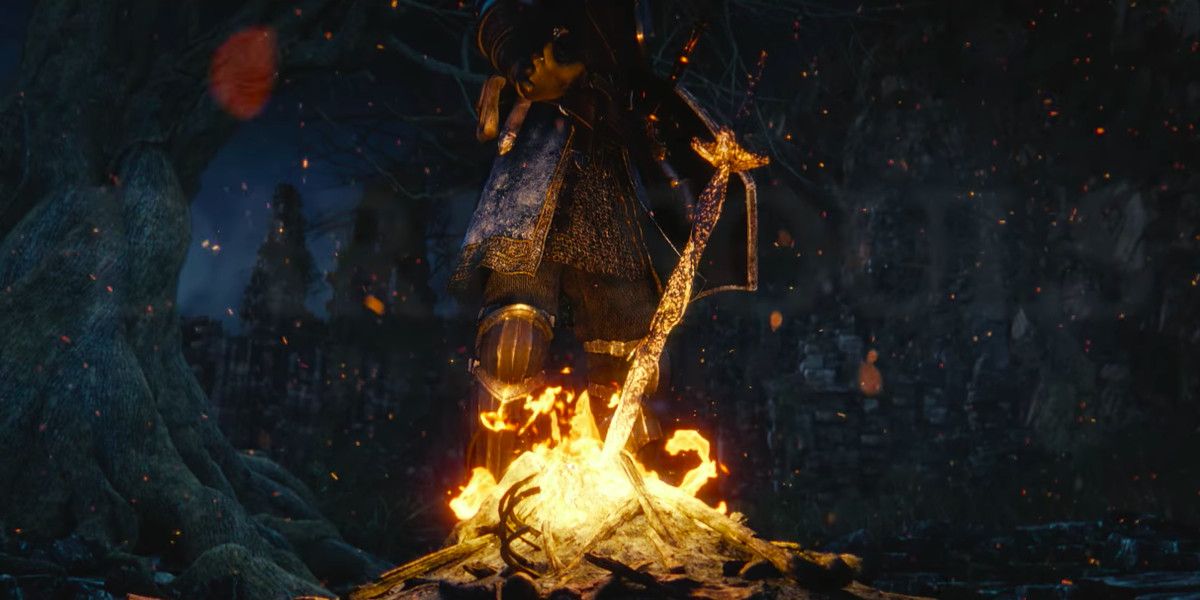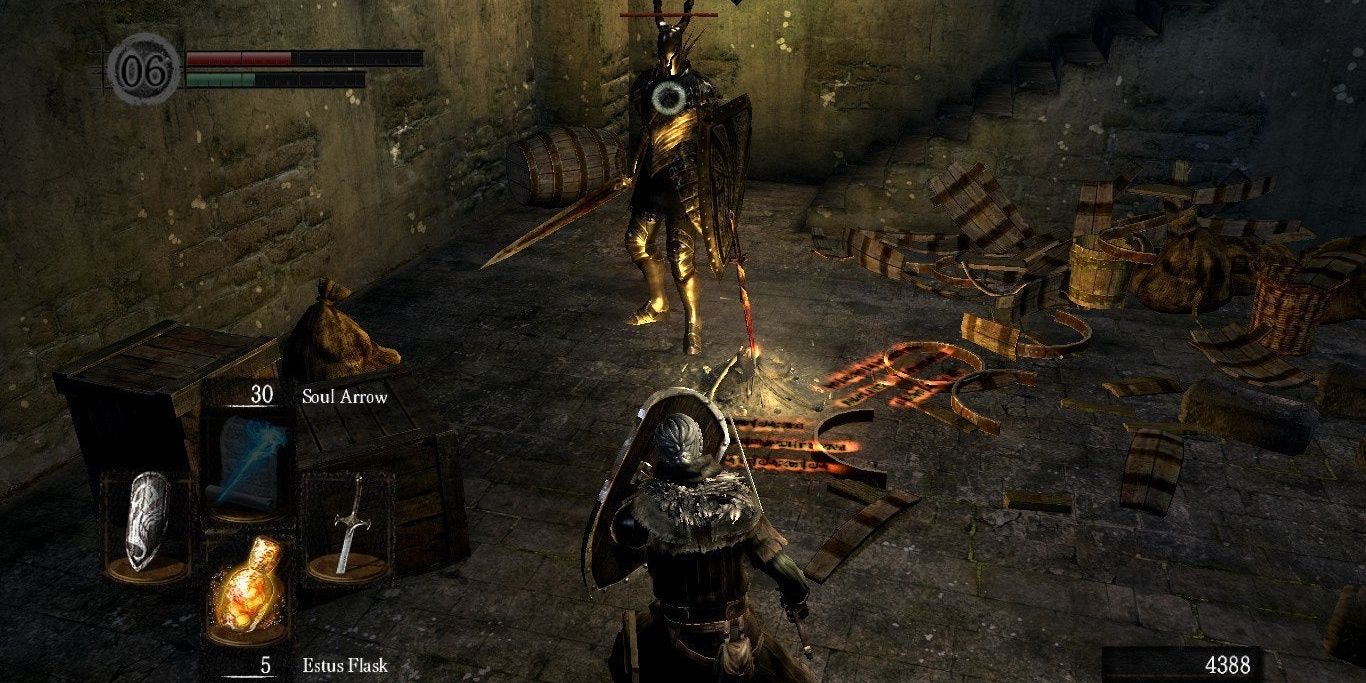The bonfires in the Dark Souls series acts as the players' resting station. It is where they respawn when they die, it is where they can do upgrades, it can act as portals to travel from one level to another. These bonfires are a crucial element to the overall gameplay, but they are not without its lore relevance.
True to Souls-like fashion, even the game's resting station adds a layer to the mythology of the game. This is the level of storytelling FromSoft & Hidetaka Miyazaki are already known for, and knowing these facts about the bonfires will only make the players love this magnificent franchise even more.
10 Bonfires Are Linked To The First Flame
The "First Flame" is a crucial point to the overall story of Dark Souls. It is the concept to which almost everything in the series moves toward or moves from. The First Flame became the herald that transitioned the world from the Age of Ancient to the Age of Fire. During the new age, the First Flame acted as the source of life for many creatures.
Every single bonfire in the game is linked to the First Flame. One might even say that the First Flame was the first-ever bonfire. Once the player arrives at the Kiln of the First Flame, it clearly has the same design as a bonfire, until it is once again lit.
9 Some View Kindling Bonfires As Worship
There is one particular covenant in the world of Dark Souls that seeks to kindle bonfires to keep the power of the gods alive. This covenant is the Way of White.
The Way of White is thought to be followers of Lord Gwyn, which makes sense if the covenant's purpose is to kindle bonfires, similar to Gwyn's desire to keep the First Flame alive. Interestingly, Gwyn in Welsh means white, therefore the covenant's name could be loosely translated to "The Way of Gwyn." One known head bishop of this covenant, Allfather Lloyd, is closely related to Lord Gwyn.
8 Gwyn Used Humans To Keep The First Flame Alive
When the First Flame initially showed signs of withering, it worried Lord Gwyn for he knew the death of the First Flame marks the beginning of the Age of Dark. Not wanting to let this happen, Gwyn was desperate to keep the First Flame alive. He even "shepherded" humans to kindle the flames, which is another way of saying he led humans to their death in order to keep the fire burning.
According to the Homeward Bone, bonfires are fueled by the bones of the undead. Perhaps these bones belong to the humans Gwyn shepherded to the First Flame. Humanities can also be used to kindle bonfires, which is a reference to this fact.
7 The Souls Of Firekeepers Are Tied To The Bonfires They Keep
The firekeepers are the guardians of the bonfires in the world of Dark Souls. According to the Fire Keeper Soul item, the firekeepers are the "corporeal manifestation of the bonfires they guard," which is why a bonfire dies out once the firekeeper also dies.
Firekeepers also have the ability to upgrade Estus Flasks, which is interesting since Estus Flasks become replenished once a player rests at a bonfire. If the bonfires are capable of replenishing Estus Flasks, and the souls of firekeepers are tied to bonfires, it only makes sense that they have the ability to make Estus Flasks more potent.
6 The Sword In Bonfires
Sticking out of every bonfire is a long material that resembles a melee weapon. Some believed it was a sword, while others thought it was just a fire poker. That was until Dark Souls 3 settled this discussion once and for all.
As it turns out, that material is indeed a sword. Specifically, it is the Coiled Sword which is a tool found in Dark Souls 3. A different variation of this sword called the "Firelink Greatsword" is used by the Soul of Cinder, the manifestation of previous lords who linked the First Flame.
5 Estus Flask & Bonfires
There are major signs that the Estus Flask and the bonfire, and even the First Flame, are tied with each other.The description of the Estus Flask in Dark Souls II directly confirms the link between this material and the bonfires, but apparently, this knowledge is long forgotten. Estus Flasks also become more potent as bonfires get kindled– the only place Estus Flasks become replenished– and firekeepers have the ability to upgrade the flasks.
The Latin meaning of Estus is heat, or more specifically, heat from a fire. This only furthers the link between Estus Flasks and bonfires.
4 Vestal Virgins & Firekeepers
The firekeepers in Dark Souls and the Vestal Virgins in the Roman era share a lot of similarities. The Vestal Virgins were a group from the Roman era who were priestesses of the goddess Vesta, the Roman goddess of hearth. One of the main roles of these priestesses was to tend to the sacred fire in Vesta's shrine. The firekeepers in Dark Souls do something very similar.
Interestingly, all firekeepers in the game are female. The firekeepers from Firelink Shrine in Dark Souls 1 and 3, Quelaag's sister, the old women from Dark Souls 2, and more. All firekeepers also show a physical disability or two. This could be a reference to how badly Vestal Virgins were beaten, sometimes to the point of disfigurement, as a form of punishment whenever they committed wrongdoing.
3 Primal Bonfires
Primal bonfires are special types of bonfires found in Dark Souls II. They don't act like a typical bonfire. They cannot be used to rest on. Instead, their only purpose is to be used as a warping point to head back to Majula, the game's main hub. Primal bonfires also have broken swords sticking out of them, unlike the somewhat intact sword found on other bonfires.
All primal bonfires are located close to considerable civilizations. Judging by the name, and the broken sword sticking out of it, it stands to reason these bonfires are quite old. Perhaps even some of the first ones. This is most likely why they still retain a function, like giving the player the ability to warp from one location to another, but are unable to provide the same life force as other, more potent bonfires.
2 Bonfires Were Placed In-Game For Emotional Relief
The sight of bonfires in the world of Dark Souls provides much-needed relief. A beacon of solace in a hostile world. The creators specifically placed bonfires at locations to force players to explore the world further while scouring it to reach the next checkpoint. On top of this, Hidetaka Miyazaki mentioned that they made bonfires a place where players can see the vague shadows of other online players resting at the same bonfire to provide "emotional relief." It's as if it provides the players a feeling of safety, ensuring them that they're not alone in this endeavor.
1 The Inspiration For Bonfires
There are two links that can be tied to the main inspiration of the bonfire mechanic in the Souls series. The first is from the Berserk manga, which Hidetaka Miyazaki is admittedly a fan of. In this manga, a bonfire is seen as a place where one can relax and ponder. The bonfire of dreams is a place where hopes and dreams are seen in each little flicker of light. It is also where a character ponders the thought of fighting & dying pointlessly, which is relatable for every Dark Souls player.
Another inspiration can also be traced to The Seven Samurai by Akira Kurosawa. One particular shot in the movie shows a sword being thrust in the middle of a bonfire, similar to the design of the bonfires in the game.

